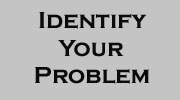

| LAWN
CARE GUIDE FOR CENTRAL OHIO AREA March Lawn clean up. Remove sticks, leaves and debris from the lawn. A one- time early spring mowing at a lower cutting height, can be used to remove dead grass blades and encourage spring green-up Seeding, over seeding. Sow seed as soon as soil is workable. Seed must make soil contact for successful establishment. Seeding may be carried over into early April, if necessary. Core Cultivation. ( Aeration.) Core cultivation can be done when the soil is moist, so that the operation pulls adequate soil cores, at least 2”-3” in length. Winter/Early spring Lawn Diseases Potential diseases are Pink snow mold, Gray snow mold, leaf spot, red thread, fairy ring, necrotic ring spot and yellow patch April & May Fertilization If late fall fertilizer was applied last October late November, Then make one fertilizer application this spring, preferably in late April or early may, using 3/4 # actual N per 1000 square feet, each time If no late fall fertilizers was applied then make two applications this spring: one about April 1, the other in late may using ¾ actual N per 1000 square feet, each time Mowing Bluegrass, perennial rye grass and the fine fescue should be mowed at a height of 2” to 2 1/2; tall fescue is mowed at 2 1/2 “- 3”. Mow often that so that no more than one-third of the grass blade is removed at any one cutting. Make sure mower blade is sharp for clean cuts. Irrigation It may be necessary to water the lawn if spring is dry. Water deeply once a week; apply 1” of water to wet the soil 6”-8” deep, if rainfall is insufficient. Check soil with a trowel to see if soil is wet to 6” depth. Early morning watering is best. Lawn insect control White grubs resume their activity as the soil warms. These grubs however, are large and fairly resistant to insecticidal treatment, should be as spring treatment if necessary, it is best to have a commercial lawn company apply insecticide. Pre-emergent crabgrass control Pre-emergent herbicides can be applied in spring for control of crabgrass, barnyard grass, foxtail and other annual grassy weeds. In most seasons treatment deadline is mid-April for Central Ohio. A few annual broadleaf weed can also be controlled with this application, five to seven most nights with 50°F soil temperatures are required for crabgrass to germinate. An organic product is corn gluten meal, if you are seeding the lawn in spring; do not apply a pre-emergent herbicide. Broad leaf weed control Weeds must be actively growing herbicides to be effective and temperatures above 50°F; May is generally a good moth for broadleaf weed control. Selective-Post emergent herbicides available to homeowners. Some of these products occur in combination with fertilizer and both tasks may be done at the same time. Granular weed control products for broadleaf weeds are generally not as effective as liquid applications. Yellow Nut sedge Control Nut sedge will resume growth in May and can often be found through the summer; herbicides should be applied when plants are young for best results. Late Spring Diseases Diseases which may be active in May include stripe smut, red thread, necrotic ring spot, yellow patch, slime molds, and fairy ring. _______________________________________________________________________ June Fertilization Eight to ten weeks after the spring fertilization, apply ½-1# actual N per 1000 square feet using a complete fertilizer. If no fertilizer was applied in spring, do make a June application. Broadleaf Weed Control Treatments can continue into early June as long as weeds are actively growing and the weather is not hot (over 80 degrees F) and dry. Mowing Same as in May Irrigation Same as in May Lawn Insect Control Watch for population of these insects and manage them as needed: Bluegrass billbug larvae- early June- http://ohioline.osu.edu/hyg-fact/2000/2502.html Chinch Bug- about mid-June http://ohioline.osu.edu/hyg-fact/2000/2503.html  Sod webworm- about mid-June http://www.landscape-america.com/problems/insects/sodwebworms.html Crabgrass Control Use post emergent herbicides starting when crabgrass is less then 1 “tall: treating later is ineffective. Repeat treatments are necessary, and some discoloration of the grass may be expected. July Mowing- Raise cutting height 1/2 “to increase shading effect on soil and grass crowns for the summer stress period. Depending on temperatures and rainfall or irrigation, grass may be going into dormant state and mowing will be less frequent through July and August. Irrigation Follow these guidelines for irrigation if you desire to maintain a green lawn through the summer stress period, assuming rainfall is insufficient: Apply 1 “of water per week (take some measurements to ensure you are applying this amount) Check soil at 6” depth with a knife or trowel for moisture content. Be aware of water use; a 7500 ft2 lawn will require 4680 gallons of water a week. If the grass is allowed to go dormant and rainfall is low, a light irrigation of ½ in of water every 3-4 weeks is recommended to keep roots and crowns alive but will not turn green the lawn. If dormancy is lengthy and temperatures are excessively high, some loss of lawn is probable. SUMMER and EARLY FALL Diseases Diseases that may be active July through September include: brown patch, dollar spot, clime molds, powdery mildew, and rust, and anthracnose, fairy ring, melting out, stripe smut, necrotic ring spot and summer patch. August Fertilization At the end of August or early September apply fertilization using # 1 actual N per 1000 square feet. Lawn Insects Control Watch for populations of these insects and manage as needed: Chinch bug – Mid to late August Sod webworm- through August White grubs- Control action is needed when grub populations are greater than 10 per square foot. Treat about mid to late August. Check lawn 2-4 weeks after treatment to make sure late season grubs are not present. Irrigation Same as in July ________________________________________________________________________ September Seeding Over seeding Ideally any seeding, overseeing or other renovation is done by September 15th for best fall establishment. Thatch Management- Core Aeration Core aerate the lawn to manage thatch so that ½” or less is present. In addition, a lawn can be core aerated to reduce soil compaction. Run the machine in three or four different directions over the lawn to create at least 9 holes per square foot. Soil should be moist to pull good cores: cores should be 2”-3” in length. If thatch is ½” or greater in depth, the lawn should be heavily core aerated, 20 cores per square foot. If thatch is excessively deep consider stripping off the old sod and renovating completely. An overly deep thatch layer greatly reduces pesticide penetration for billbugs and white grub control and reduces water and fertilizer filtration. Fertilization Apply 1 # actual N per 1000 sq ft if none was applied in late August. Best applied early in the month. If only one fertilizer application is to be made in the fall, make it in later September or early October. Mowing Lower cutting height back to 2”-2 ½” inches (2 ½”-3” for tall fescue) Mowing frequency will likely increase with cooler temperatures and moisture Irrigation Same as August, if needed Lawn Insect Control White groups may be present in September and October. These late season older grubs are voracious feeders and chemical control may be difficult. We suggest you have a commercial lawn care firm treat for these grubs. Broadleaf Control Broadleaf weeds will resume with cooler temperatures and moisture. Fall is often the best time to control weeds since the grass fills in as the weeds die, and there is less chance of injury to flowers and vegetable gardens compared to spring applications ________________________________________________________________________ October Seeding/Overseeing Accomplish no later than October 15th Sodding Sod should be laid no later than 4 weeks before the ground freezes for good root establishment. Follow good watering practices. Mowing Continue as long as grass is actively growing Leaf Removal Fallen tree leaves should remain no longer than two weeks on grass. Grass may become stressed and discolored if sunlight is limited for long periods. Fall Diseases Watch for Powdery mildew and rust, two diseases that may be active in October Late Fall Fertilization Apply 1 # -2 # actual N/1000 square feet in late October or early November. Grass should still be green and air temperatures typically below 55 degrees. This is the most important fertilization of the year for turf grass ________________________________________________________________________ . November & December Late Fall Fertilization Application should be made no later than November 15th. See October note for details. Mowing For the last mowing of the season cut the grass at 2 “ to avoid problems with snow mold, especially if you are in the area where winter snow cover is common. |






